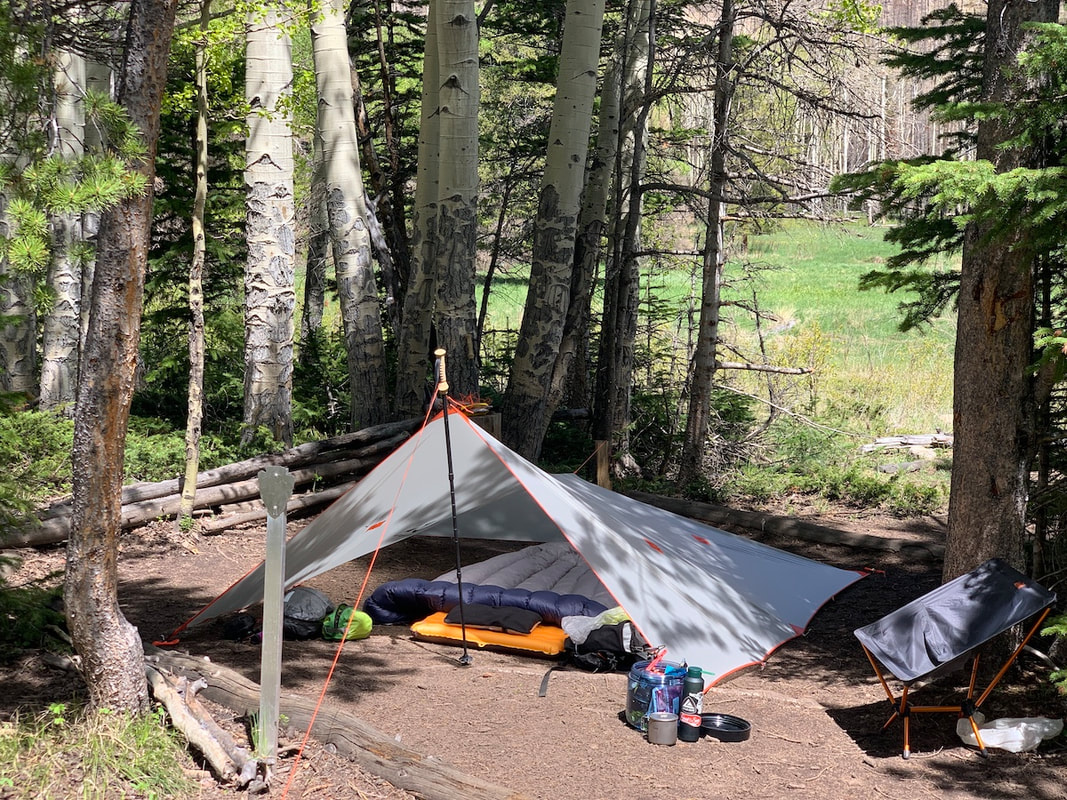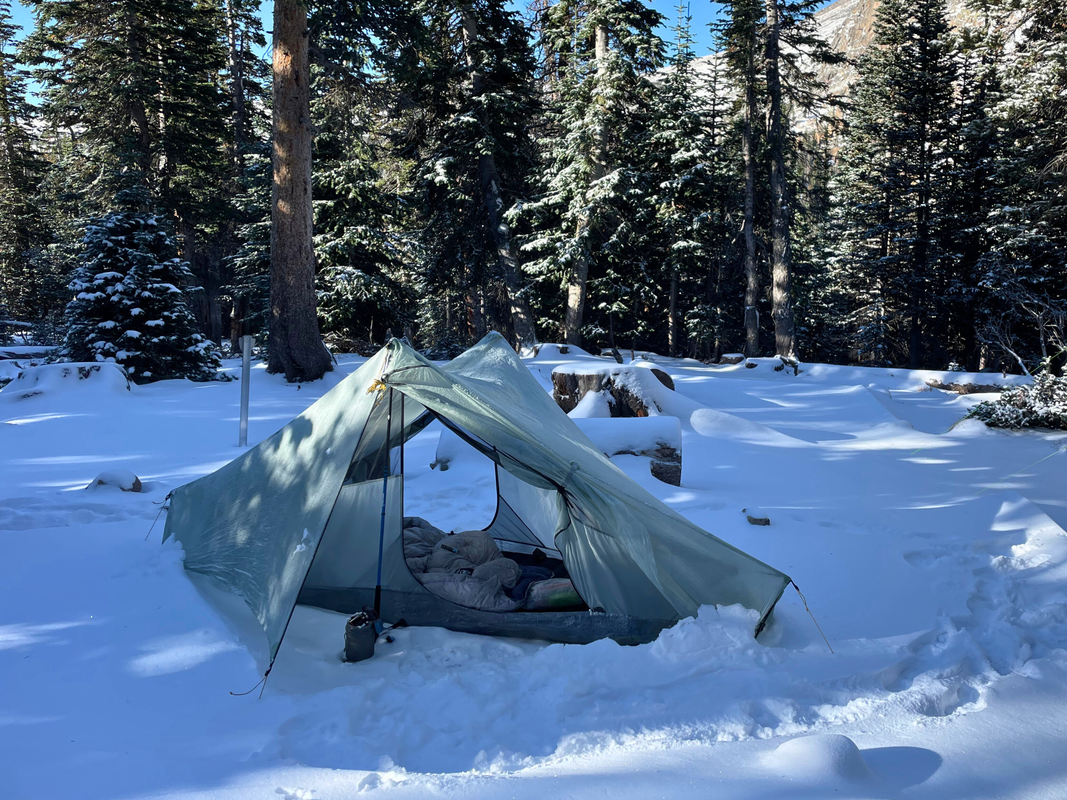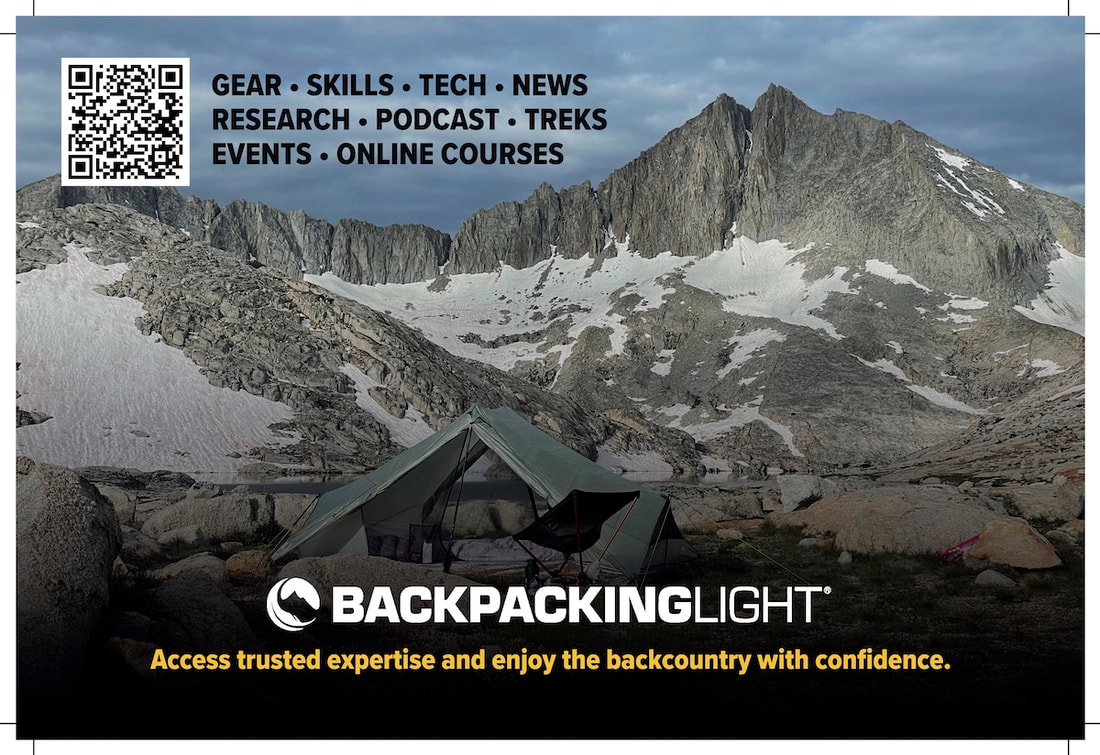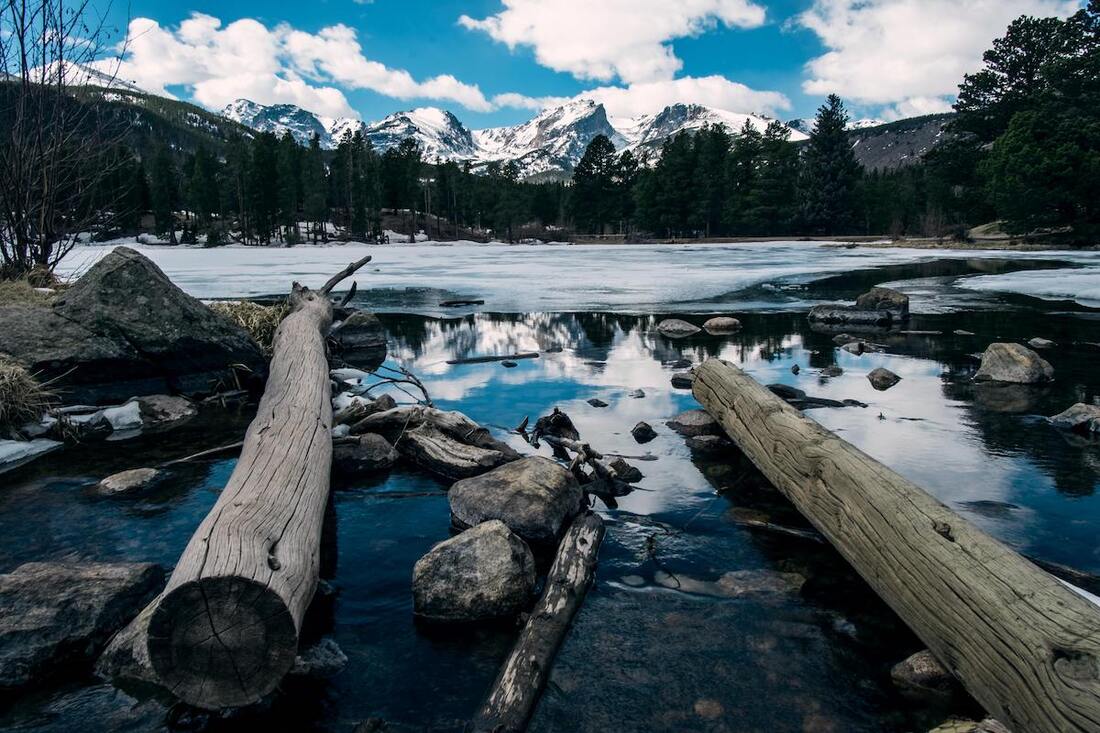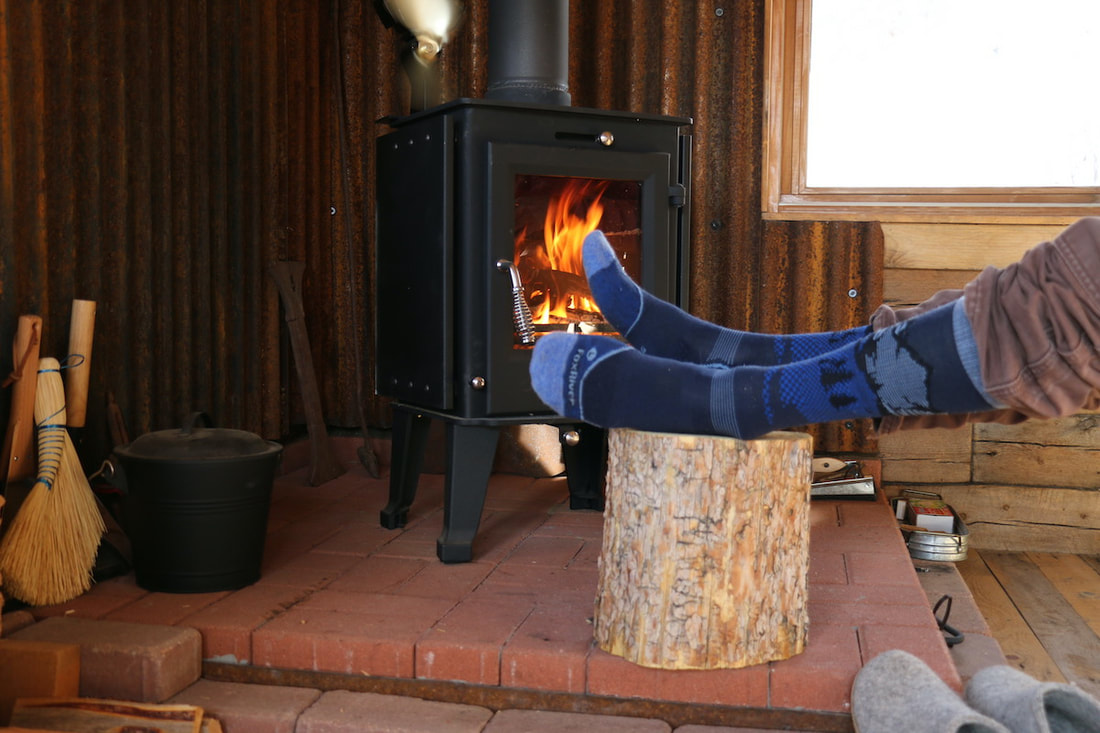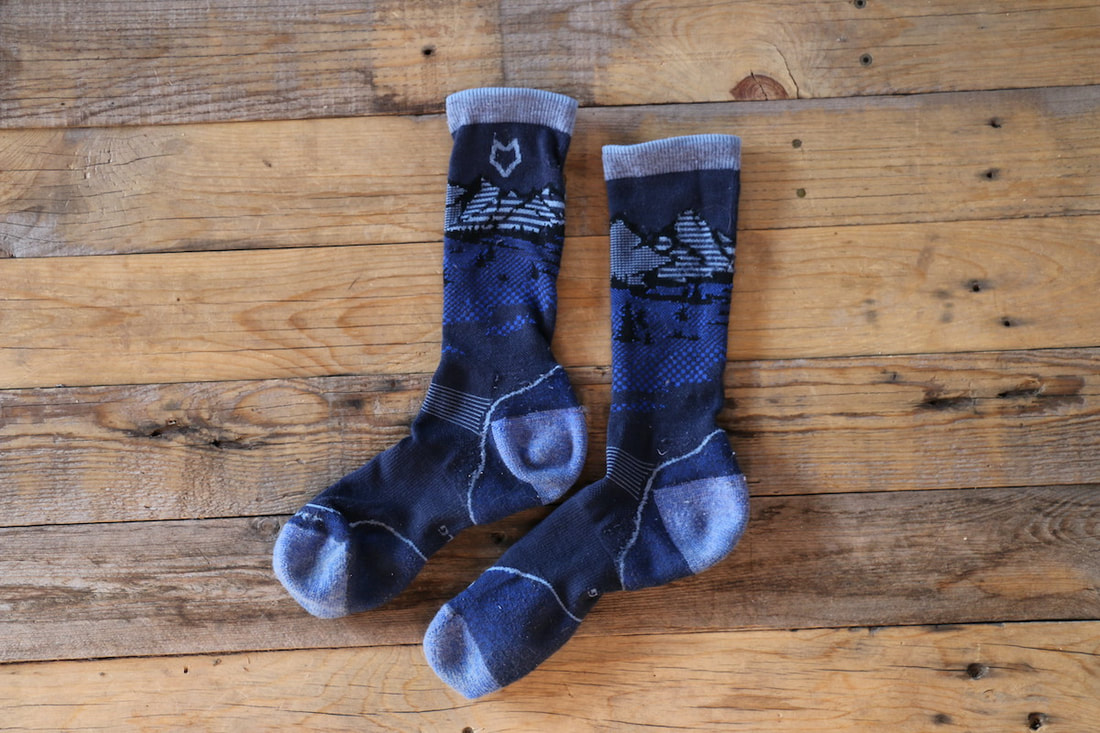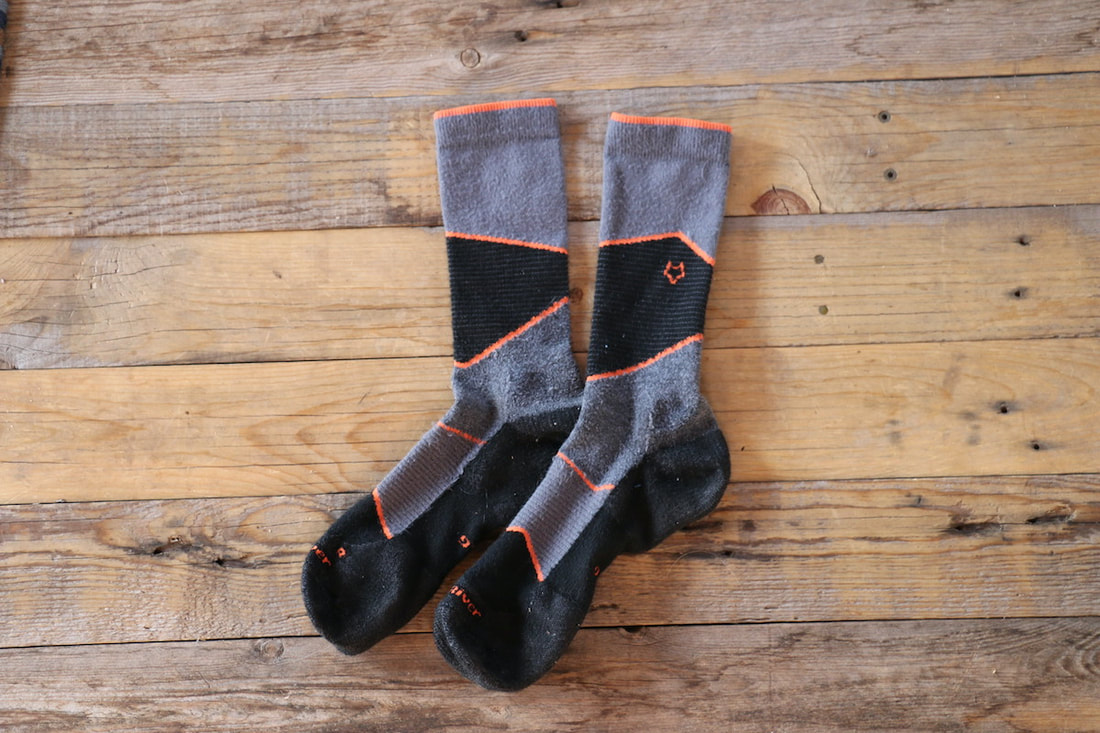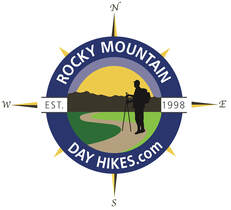|
Notes from the
Trail |
|
By Ryan Jordan Backpacking is fundamentally simple:
But beneath this simplicity lies a journey toward mastery—a pursuit that has fueled my passion for backcountry travel for decades. Living in Estes Park, with Rocky Mountain National Park as my backyard, has given me an incredible landscape to refine my skills, test gear, and push the boundaries of what’s possible in the backcountry. The Path to Mastery I've approached backpacking as an artisan approaches a craft: with curiosity, discipline, and a desire to improve. Over the years, this mindset has allowed me to explore deeper, venture farther, and travel more comfortably in all seasons and environments. Here’s how I keep my passion alive: 1. Embrace Simplicity At its core, backpacking is about movement, rhythm, and freedom. Some of my most memorable nights in Rocky Mountain National Park weren’t on ambitious multi-day treks but rather on quiet solo trips—like the one where I bivvied under a clear winter sky in the remote northeast corner of the Park, frost forming on my quilt, the distant bugle of elk my only company. Traveling light allows me to be more present in these moments, focusing on the experience rather than the burden of my pack. 2. Understand Gear Performance A deep understanding of gear is essential. Knowing why certain materials perform well in specific conditions has helped me make informed choices. I recall a late fall trip to Long Lake when an unexpected snowstorm rolled in. My tent selection—a Dyneema single-wall shelter—struggled with condensation, reinforcing the importance of ventilation strategies. Every outing is a learning opportunity. 3. Optimize Gear Systems No single piece of gear exists in isolation. Each trip teaches me how different systems interact—how my quilt choice impacts my sleeping pad needs, how my layering system affects my shelter strategy. After years of refinement, I’ve built systems that work harmoniously, allowing me to adapt quickly to changing conditions. 4. Study Materials & Technology Learning about emerging technologies has shaped my evolution as a backpacker. I test everything from mesh base layers to open-knit high-loft fleece during my day hikes and runs in the Park. Ultralight tents and stoves and quilts and pads find their way into my overnight packs, where I test them in the shadows of Longs Peak or the Mummy Range. Staying on top of new developments helps me refine my approach and make smarter investments in gear. 5. Advance Your Wilderness Skills Gear alone doesn’t make a great backpacker. Skills do. Mastering navigation, weather awareness, campsite selection, and risk assessment has given me the confidence to explore remote areas safely. Whether it’s micro-adjusting my route based on avalanche risk in the winter or understanding how katabatic winds impact campsite warmth, every skill I learn allows me to travel with greater confidence. Rocky Mountain National Park isn't just my playground, it's my gear laboratory and proving ground, where I can push gear to its limits and test new skills. Mastery is a Process Backpacking isn’t about reaching an endpoint of expertise—it’s about continuous growth. That’s what drives me as an outdoor educator, and motivates me to share what I've learned to help others explore the majesty of Rocky Mountain National Park - and beyond - with comfort, safety, and confidence.
0 Comments
by Edrian Norris From the rugged mountain environments to wildlife and alpine lakes, Rocky Mountain National Park has something for everyone. In the winter, camping enthusiasts will also enjoy the park's Aspenglen Campground. Most recently, the Park announced it would host snowshoe and ski tours starting in January and through Late March, taking place at various locations inside the park near Grand Lake. The 2-hour guided snowshoe tours will have park rangers sharing their knowledge about plants and wildlife in the area as participants walk through hilly, snow-covered meadows. Meanwhile, cross-country ski tours are set to begin on January 18 and will continue through March 15. Of course, experienced hikers and campers who prefer having their own itinerary are also welcome to do so. However, ensuring you're taking care of your eye health in the Park's high altitudes is important for a more comfortable and enjoyable hiking experience. In this post, we'll be sharing some high-altitude eye care tips for hiking in Rocky Mountain National Park: Wear sunglasses While sunglasses are typically associated with sunny summer days, eye health experts have long insisted on the importance of wearing sunglasses even when it's cloudy or dim outdoors. This is because clouds don't block UV rays, leaving you vulnerable to UV overexposure even when it isn't sunny. In our post reviewing winter gear, we highlighted the Julbo Aero sunglasses, which feature photochromic lenses in a semi-shield shape, helping protect the wearer's face from cold winds at high altitudes. If you already wear glasses or contacts for corrective purposes, you don't have to ditch them in favor of shades. In this case, you can opt for prescription sunglasses which are easily available in physical stores and via online retailers. Sunglass Hut offers a wide range of prescription shades from different brands, including sports and activity brands like Oakley and Costa. Aside from prescription lenses, you can also go for lens upgrades or coatings like polarized lenses to eliminate snow glare and harsh reflections, as well as semi-shield silhouettes to provide more coverage from the high altitude weather. Consider goggles If you're especially sensitive to the cold or the winds, you may want to consider goggles. When hiking or camping at high altitudes, the cold and harsh winds can cause problems for your eyes, including dryness, irritation, and possible particles getting in your eyes. In this case, goggles offer more airtight protection, ensuring outdoor elements don't hit you in the eye and parts of your face. Goggles also tend to offer a wider field of view, which can be crucial for navigating complex terrains. Nowadays, there are different kinds of goggles you can find depending on your needs and preferences. A collaboration between visual artist Shantell Martin and Anon in 2023 introduced an innovative magnetic face mask called the Sync Goggle. These goggles used Anon's M-Fusion magnetic latch system to secure lenses and remain lightweight. If you're worried about strong winds at high altitudes, this magnetic technology can be good for your peace of mind. However, goggles do have a problem of occasionally misting depending on the weather. As such, you may still want to keep a pair of sunglasses handy. Pack water and snacks Finally, one of the best ways to protect your eyes when hiking in high-altitude areas like Rocky Mountain National Park is to ensure your body is well-equipped for the weather conditions, especially in the winter. While packing adequate water and snacks is certainly necessary, you should also pay attention to hydrating snacks like fruits or dried fruits to ensure you have enough liquids. For other snacks, you'll want to focus on foods with lots of protein and carbs, such as crackers or bars. Meanwhile, experts recommend packing at least a liter of water per person every two hours of hiking. Most trails and itineraries for hiking Rocky Mountain National Park average between three and four hours, so you should pack accordingly. by Murray Selleck Fox River Socks may be the best Christmas stocking stuffer gift you can choose. Of course, the gift receiver may think, “Bah humbug” the moment the socks are unwrapped. However, once they pull the new socks on their feet the feeling of being underwhelmed is replaced with the comfort of a warm Christmas hug! So, so, good! These past few months I’ve been testing a few pairs of Fox River socks in my hiking and backcountry ski boots. The comfort is excellent. The durability is great. They show no signs of thinning or premature wear after using them and washing them consistently for months. The two socks I’ve been wearing are the Matterhorn LW Crew and Ramble LW Crew. While they are both pretty similar in fit and performance there is a difference. The Matterhorn is primarily made up with merino wool and the Ramble is knitted up with majority Coolmax®. One is made with more natural fibers and the other is synthetic. The Matterhorn LW Crew: The Matterhorn uses 35% merino wool. Merino is incredibly popular because it is a natural fiber, renewable, anti-microbial, biodegradable, and feels great next to your skin. It also has the ability to self regulate temperature. With the addition of silk (13%), polyester (6%), and spandex (2%), the sock has increased durability compared to a sock using 100% wool. And with the silk you’ll notice a nice smooth and soft feel to the sock. Shall we say silky? Yes, the smoothness with the silk is noticeable. The spandex adds a touch of snugness to the sock and stay-in-place performance. They won’t shift on you inside your footwear or slip down your shins. The Ramble LW Crew: The Ramble is a synthetic sock but that is no reason to shy away from its performance, comfort, and fit. The majority fiber is Coolmax®. Coolmax is made up of 60% recycled fibers. It is also a hollow fiber that allows it to wick moisture away from your skin, trap heat to keep you warm when you need it, expels heat and moisture when you need it, and dries quickly. The rest of the sock is made with nylon, polyester, and spandex. Same with the Matterhorn, these additional fibers help create a snug fit around your foot that won’t shift, bundle around your toes, or slip down your calf. Shared Features: Both models of socks share a left and right design, memory fit construction, hold their shape nicely, add foot support around the arch, absorb shock through the heel and toe protection with additional padding, and offer a nice, smooth, flat toe seam. This all adds up to both of these models of socks performing well and fitting and feeling nice on your skin. It may be a toss up between these two socks as to which one becomes your favorite. I like everything there is to like about using Merino wool not only for socks but for clothing, too. My only (slight) personal concern is how quickly it dries. This comment probably pertains more to next-to-skin base layers (torso and legs) rather than socks but if you accidentally dunk your feet into a creek... Wool does insulate when wet but it does take time to dry. And if it is next to your skin it may feel clammy until then. This consideration is really only important when you know your day will be filled with lots of climbing, breaking a deep snow trail, winter camping... Times you know you will be working hard and breaking a sweat. The key to staying warm in the winter is staying dry! Synthetics, however, dry quickly even while you’re wearing them. Synthetics are oil derived and it is good to seek out recycled synthetic products whenever possible. Good for Fox River for doing exactly that… A LIttle About Fox River: Fox River is USA company and they do all their knitting/manufacturing in Osage, Iowa. They have been around since 1900 and their longevity proves they know quite a bit about design, production, and offering great value with their products. You get a lot of value with their socks because they fit and perform excellently and they last a long time. Final Thoughts: Socks are every bit as important of an outdoor gear selection as any big ticket item. They are our first perception of comfort before we lace up our shoes or buckle our boots. They provide trail pounding cushioning. They keep the cold at bay in the winter and expel heat and sweat in the summer keeping us comfortable. Great socks provide all day comfort. If you haven’t considered Fox River in the past you’ll be happy when you do in the future! Where to Buy: Colorado Front Range Stores offering Fox River are Jax Goods (Fort Collins, Loveland), Whiteside's Boots (Greeley and Loveland), and the YMCA of the Rockies (Estes Park). Fox River socks are also sold through their website foxsocks.com. |
"The wild requires that we learn the terrain, nod to all the plants and animals and birds, ford the streams and cross the ridges, and tell a good story when we get back home." ~ Gary Snyder
Categories
All
“Hiking -I don’t like either the word or the thing. People ought to saunter in the mountains - not hike! Do you know the origin of the word ‘saunter?’ It’s a beautiful word. Away back in the Middle Ages people used to go on pilgrimages to the Holy Land, and when people in the villages through which they passed asked where they were going, they would reply, A la sainte terre,’ ‘To the Holy Land.’ And so they became known as sainte-terre-ers or saunterers. Now these mountains are our Holy Land, and we ought to saunter through them reverently, not ‘hike’ through them.” ~ John Muir |
© Copyright 2025 Barefoot Publications, All Rights Reserved

